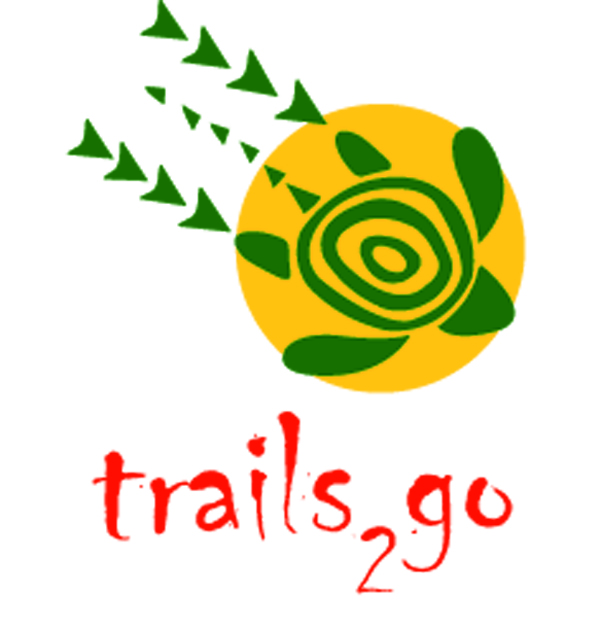Guerrilla interpretation confronts, pricks, and unsettles, using the panoply of media to cast interpretive messages wherever an audience lurks.
New technologies do more than advance society, they disrupt. Innovations create new applications and new markets. Often the innovation precedes the market. Fred Smith had to convince businesses of their need for an overnight delivery before he could market FedEx.
Innovations disrupt existing markets, technologies, and applications, displacing those that came earlier. The railroads began struggling during the Great Depression as automobiles and air travel gradually displaced travel by train. Digital cameras replaced film. Digital music is replacing CD’s, which replaced compact cassettes, which replaced 8-track cassettes, which replaced vinyl records. Each new medium erases the one before.
Communications, as an industry, isn’t immune to such disruptions. Print ad revenues are now the lowest they’ve been since 1950. The average American 18+ spends over 11 hours per day using electronic media. Look closely at this infographic from Statista. Note the smartphone use; Americans now spend more time on their smartphones each day than surfing the Internet (a medium only 20 years old itself) from a desktop.
Deloitte Australia has identified 13 industries comprising 65% of the Australian economy that are facing significant disruption by 2017. The industry most at risk? Information technology and telecommunication. Arts and recreation is another that Deloitte categorizes as being “short fuse, big bang.” Government services, in comparison, is a “long fuse, big bang” industry, a factor that may delay wholesale change within agencies that employ interpreters and interpretive services.
Larry Downes and Paul Nunes, writing in the Harvard Business Review, state that “big-bang disruptions differ from more-traditional innovations not just in degree but in kind. Besides being cheaper than established offerings, they’re also more inventive and better integrated with other products and services. And today many of them exploit consumers’ growing access to product information and ability to contribute to and share it.”
Look at the projected growth in global smartphone traffic, one aspect of this “growing access” to information. The smartphone app (now numbering over 1 million) is one way that information access is facilitated. According to Deloitte, nearly half (48%) of all organizations plan to offer mobile apps to customers within the next three to five years, compared to 18% now.
If advertising, marketing, graphic design, and public relations have been upended by the digital revolution, why not interpretation? Are interpreters exempt from this transformation? If these technologies (the New Media) can replace the various media used by interpreters, will they replace the interpreters as well?
Yes, at least in their current form.
Changes have already taken place around the edges. No one types the text for a map or guide on a Remington or IBM Selectric anymore. Try to find a manual typewriter. Interpretive signs are digitally designed. Exhibits often include touch screen technologies. Museums have Facebook pages and a Twitter accounts. Yes, changes have taken place, around the edges.
Yet, interpreters appear to have generally dodged the disruption. The profession is able to skip along its well-worn path as if nothing is amiss. A revolution may be swirling around, but interpretation remains within its vortex, blithely unconcerned. Trainers worry more about which rubber toys to bring to their sessions than how to help interpreters avoid (or, at least, delay) displacement.
The disruptive impacts of digital technology are not evenly distributed, even within a single industry. And, just as different industries are threatened to different degrees by digital technologies, different interpretive functions are shadowed by different risks.
Interpretation is both medium and service. Interpreters are both creator and the created. A front-line interpreter mindlessly mouthing a script is a medium, and at risk of replacement or substitution. The interpretive planner that developed the original content and wrote the script, however, offers a unique creative service, one less easily duplicated or replaced by an algorithm or a bot.
A smartphone is a bring-your-own integrated digital platform. Delivering original content through bring-your-own platforms is disruptive. Personal interpretation is displaced.
A revolution may be swirling around, but interpretation remains within its vortex, blithely unconcerned. Trainers worry more about which rubber toys to bring to their workshops than how to help interpreters avoid (or, at least, delay) displacement.
New technologies disrupt without permission (think Uber). New Media will force new interpretation. The questions still be answered are how and if traditional interpretation will embrace this change and allow it to elevate the profession and practitioners.
Which of these New Media are the most disruptive? Which of these technologies actually advance interpretation? How do interpreters shape these technologies to their advantage? These questions, and more, will be answered our next installment of guerrilla interpretation.


![Should You Build a Mobile App or Mobile Website? [infographic by MDG Advertising] Should You Build a Mobile App or Mobile Website? [infographic by MDG Advertising]](http://www.mdgadvertising.com/blog/wp-content/uploads/2013/06/should-you-build-a-mobile-app-or-mobile-website.png)
 Trails2go continues to grow. We have added our newest SmartTrail, the Benjamin Franklin Parkway in Philadelphia. Here is the introduction to our newest SmartTrail.
Trails2go continues to grow. We have added our newest SmartTrail, the Benjamin Franklin Parkway in Philadelphia. Here is the introduction to our newest SmartTrail.